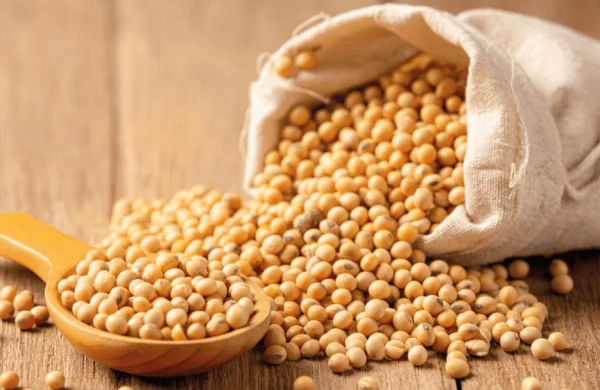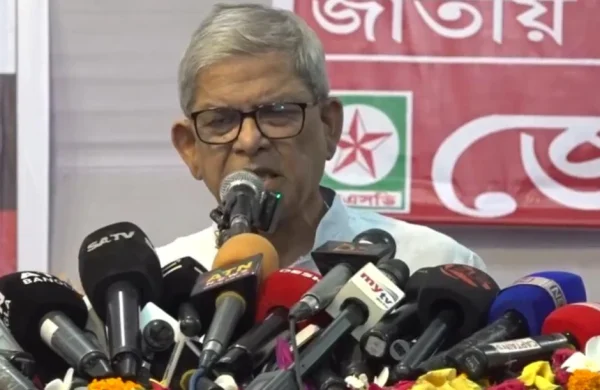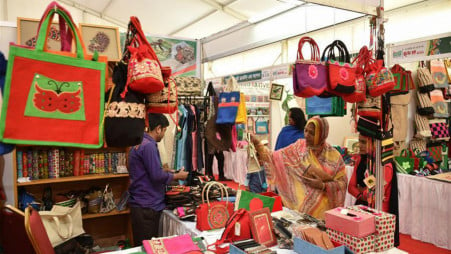Soya bean cultivation expands as feed industry drives demand
- Update Time : Friday, March 21, 2025

Staff Correspondent:
Soya bean plantation acreage and production in the country have steadily increased on improved marketing opportunities and higher profitability, especially due to a surge in demand for the protein-rich feed in Bangladesh’s booming poultry, fishery, and livestock industries.
According to a report of the United States Department of Agriculture (USDA), for the post-forecasts marketing year (MY) 2025-26 the soya bean plantation area stands at 92,000 hectares and its production at 160,000 tonnes, an increase of 2.2% and 3.2%, respectively, from the MY 2024-25 estimate.
According to the crop production data of the Department of Agricultural Extension (DAE), in post-estimates MY2024-25, soya bean was harvested on 90,000 hectares of land and its production stood at 155,000 tonnes, up by 12.5% and 6.9%, respectively, from MY 2023-24 estimate.
Over the past few years, increase in soya bean acreage, particularly in the coastal districts of Bangladesh, was driven by favourable weather conditions during the growing season, according to the USDA report.
Due to the poor quality of the beans and lower oil content, they are not used in oil production. The typical yield of soya bean varieties in Bangladesh is 1.7 tonnes per hectare, notably lower than the global average of 2.8 tonnes per hectare.
In recent years, soya bean has been gaining popularity as a cash crop. The cost of soya bean production is lower than other crops as farmers usually do not use irrigation for their soya bean crops.
Farmers sow soya bean after harvesting aman season rice and the remaining soil moisture from rice cultivation helps to germinate the soya bean. It takes 100-110 days to harvest the crop.
However, the unavailability of high-yielding varieties and lack of quality seeds continue to hamper the expansion of soya bean cultivation.
Since 1990, more than ten high-yielding soya bean varieties have been released in Bangladesh, but approximately 60% of soya bean farmers are still cultivating the “shohag variety”, which was officially released in 1991 and has a yield of 1.6-1.8 tonnes per hectare.
Agriculture economist Dr Jahangir Alam Khan that farmers have started to cultivate soya beans on more land due to the increasing price of the crops in the country.
“Farmers in the coastal region have cultivated the soya bean as the production cost is lower than other crops. However, high-yielding varieties and quality seeds are needed to increase the edible oil production from soya bean,” he said.
Bangladesh produces about 7% of its annual soya bean requirement. It is grown in very limited areas mostly in the southern belt, including Noakhali and Lakshmipur districts in Chattogram Division, and Pirojpur, Patuakhali, Barguna, and Bhola districts in Barishal Division. Domestically produced Soya beans are used predominantly in the feed industry.
The Bangladesh Agricultural Research Institute (BARI) developed the BARI Soya bean-5 and BARI Soya bean-6 varieties, which are planted by about 30% of Soya bean farmers. However, limited seed supply constraints their cultivation. The Bangladesh Institute of Nuclear Agriculture (BINA) and the Bangladesh Agricultural University also released several high-yielding soya bean varieties, but they are planted on a limited scale.
The total daily soya bean crushing capacity in Bangladesh is 17,400 tonnes. Currently, only four soya bean crushers are in operation. These crushers are currently operating at around 50-60% of their capacity, based on the domestic demand of soya bean oil and meal. Limited supplies of gas also restrict crushers’ abilities to maximise their crushing capacity.
Crushers supply around 40% of the soya bean oil and 60% of the soya bean meal requirement. Bangladesh imports the remaining 60% of the required soya bean oil as crude Soya bean oil which is refined domestically.
According to industry contacts, soya bean crushers in Bangladesh primarily rely on the sale of soya bean meal rather than Soya bean oil to generate profits. Soya bean meal is one of the key ingredients in the poultry and aqua feed industry in Bangladesh.
In Bangladesh, the Soya bean crush margin is determined by the domestic price of soya bean meal, the total imports, and the total feed production volume.
Post forecasts MY2025-26 whole soya bean crushing stands at 2.4 million tonnes, up 9.1% compared to post-estimate MY2024-25, on the increased demand of soya bean oil and soya bean meal. In MY2024-25, post-estimates total soya bean crushing stands at 2.2 million tonnes, according to the USDA report.













